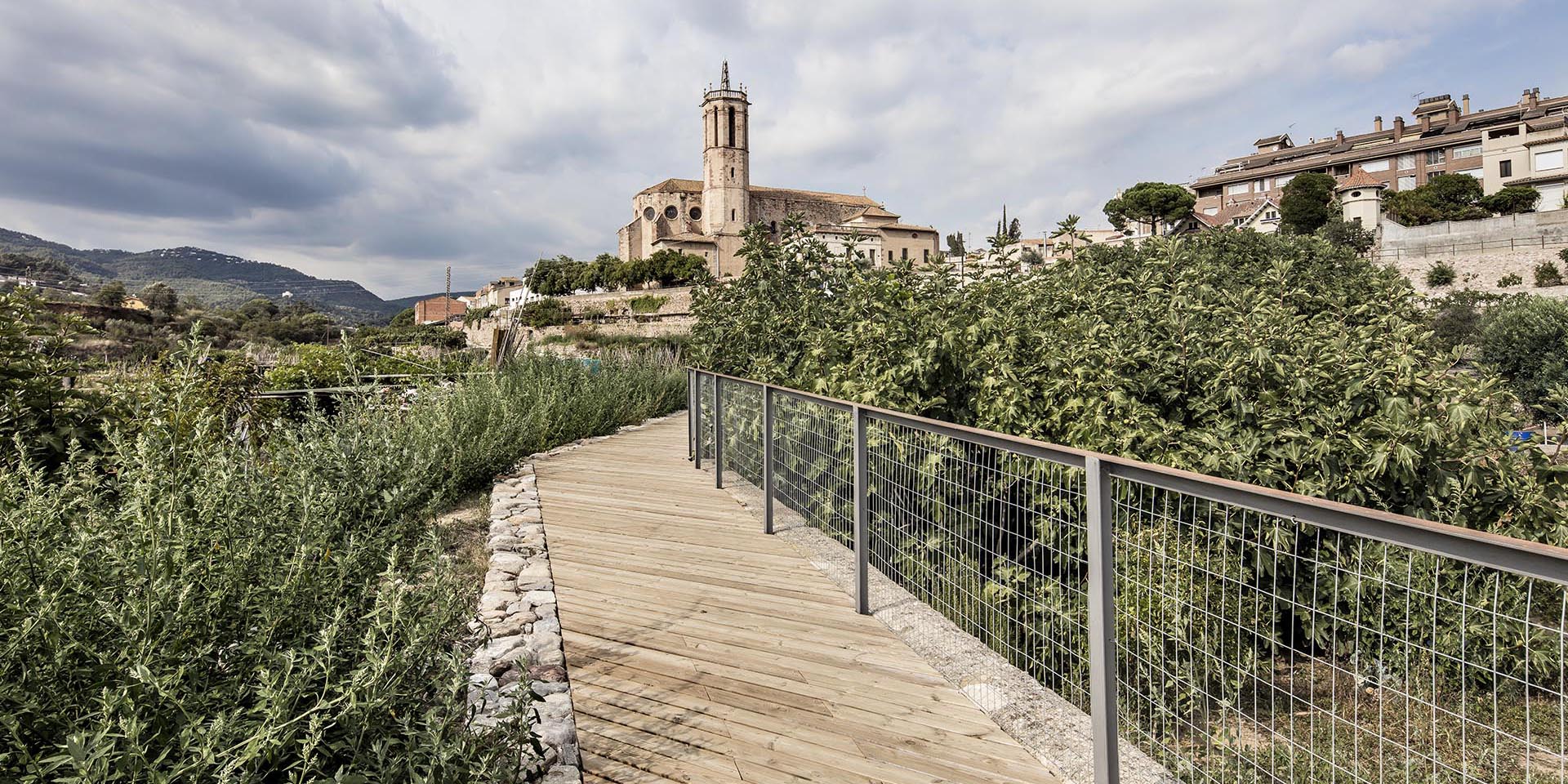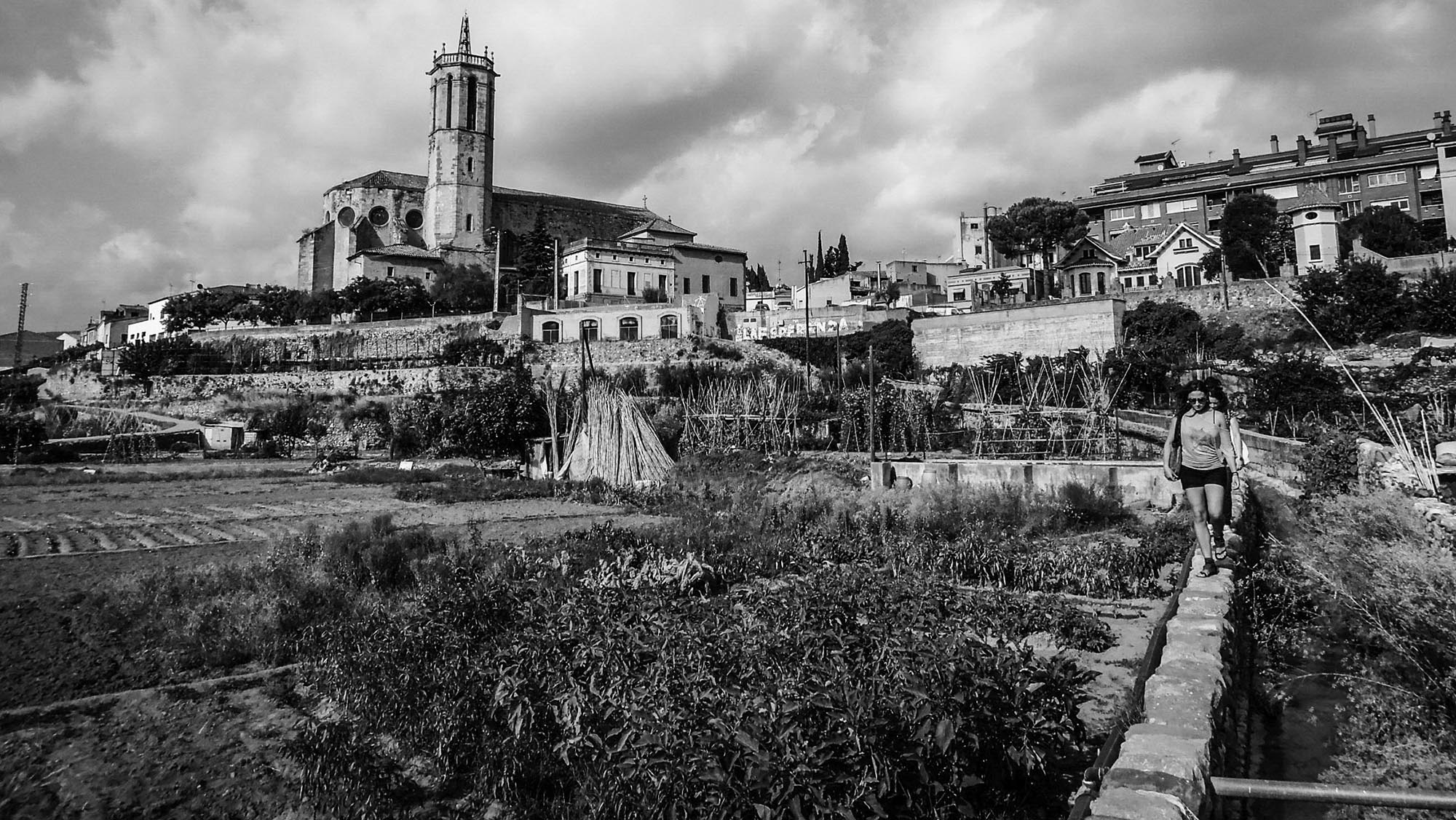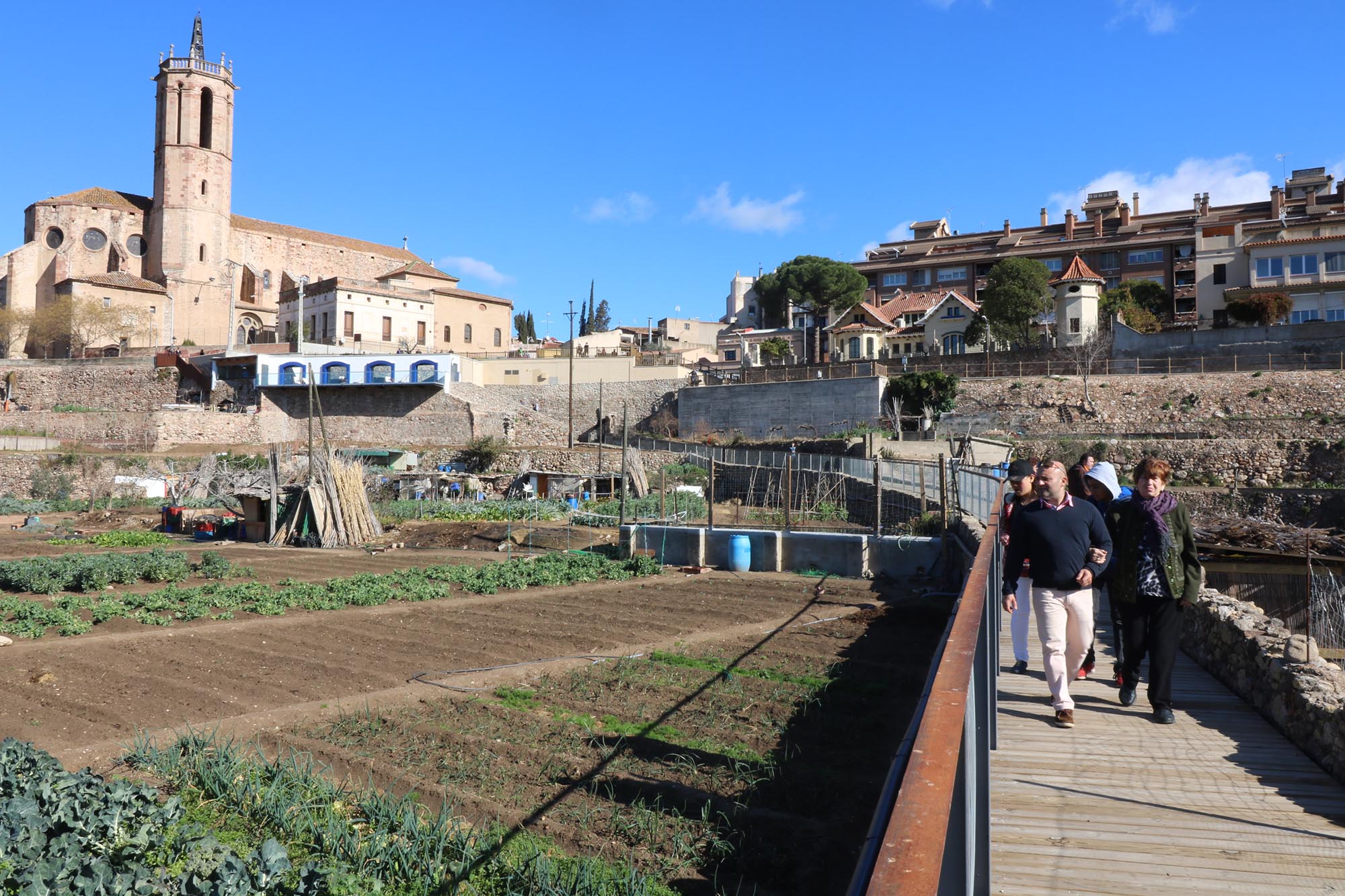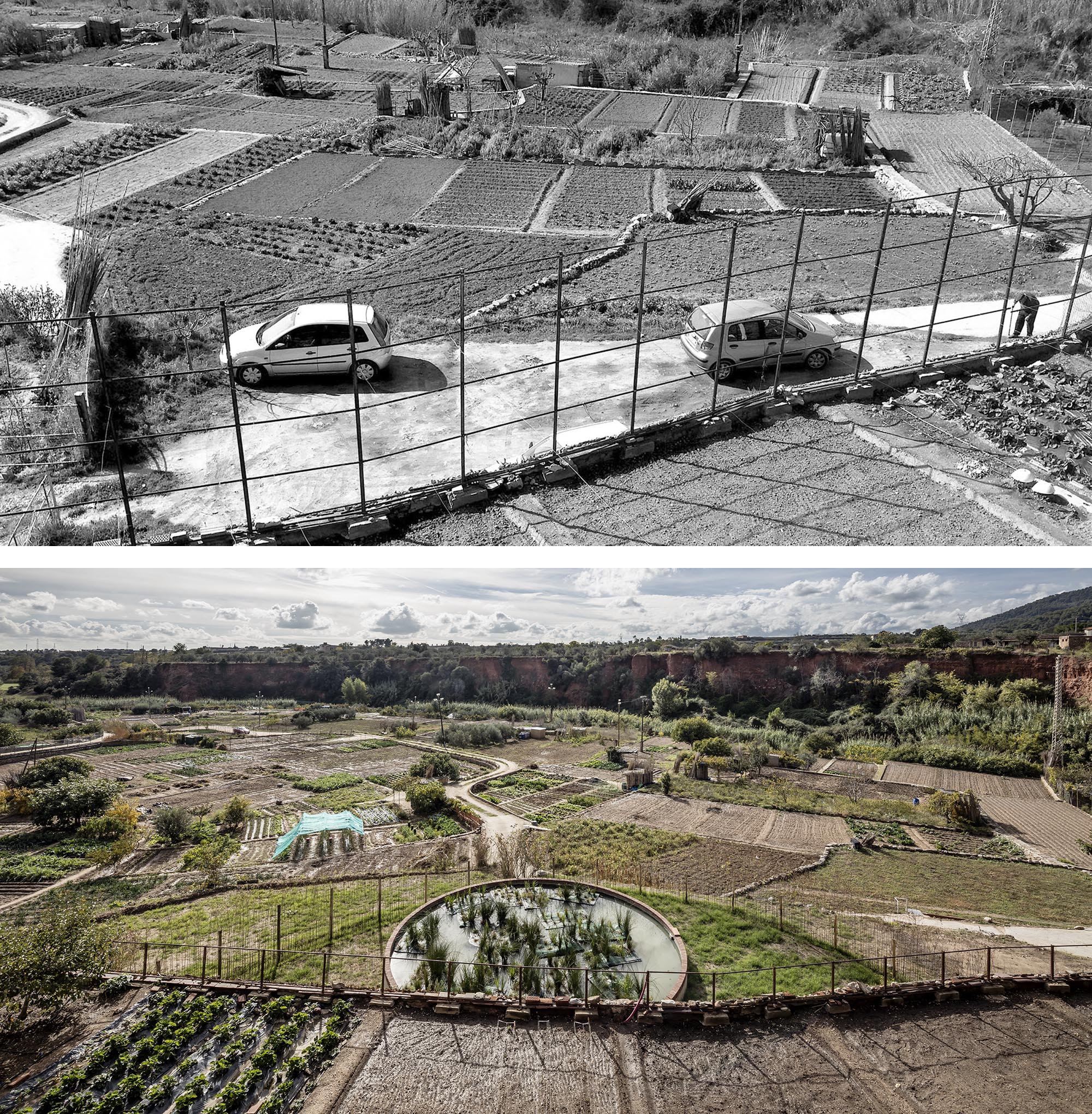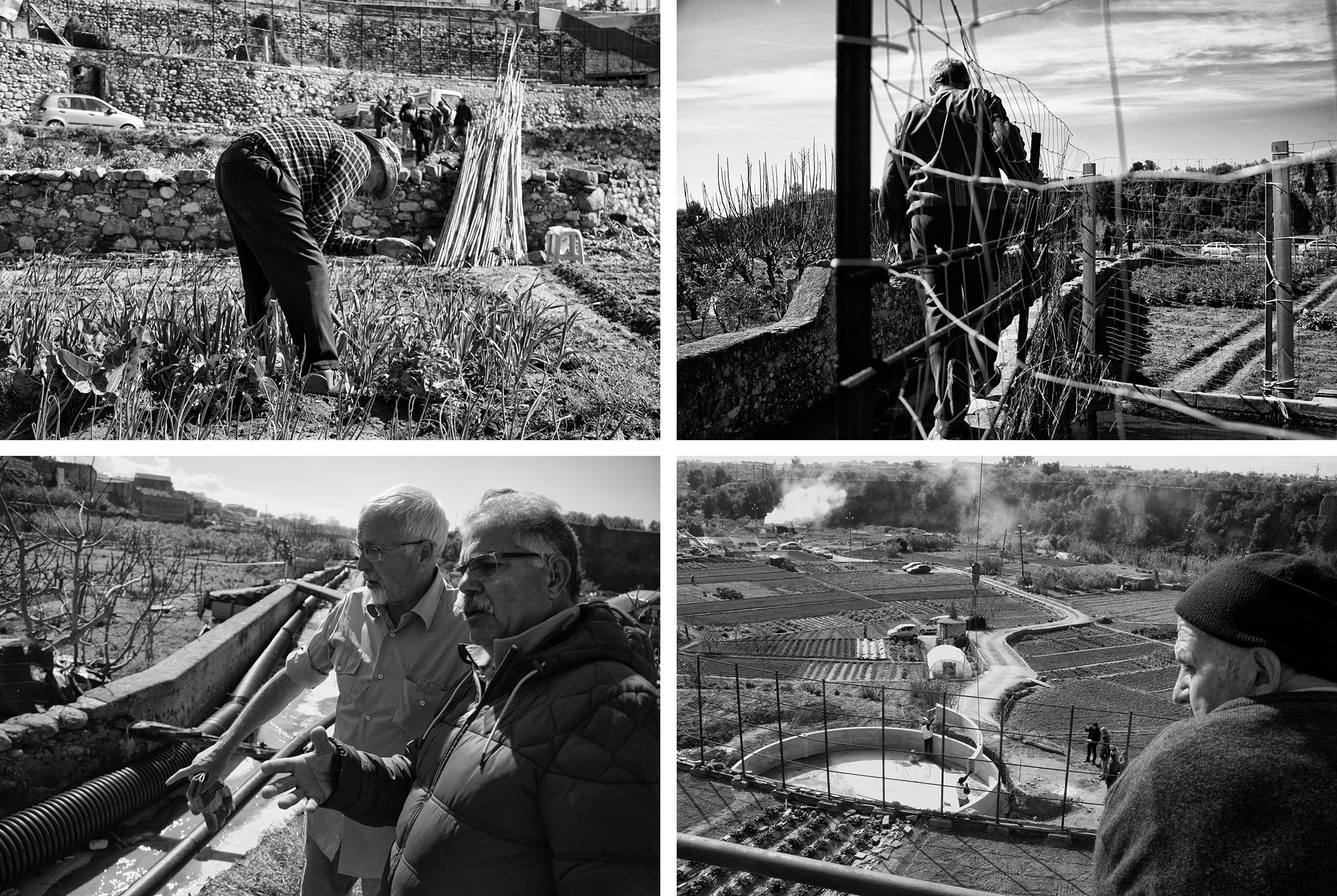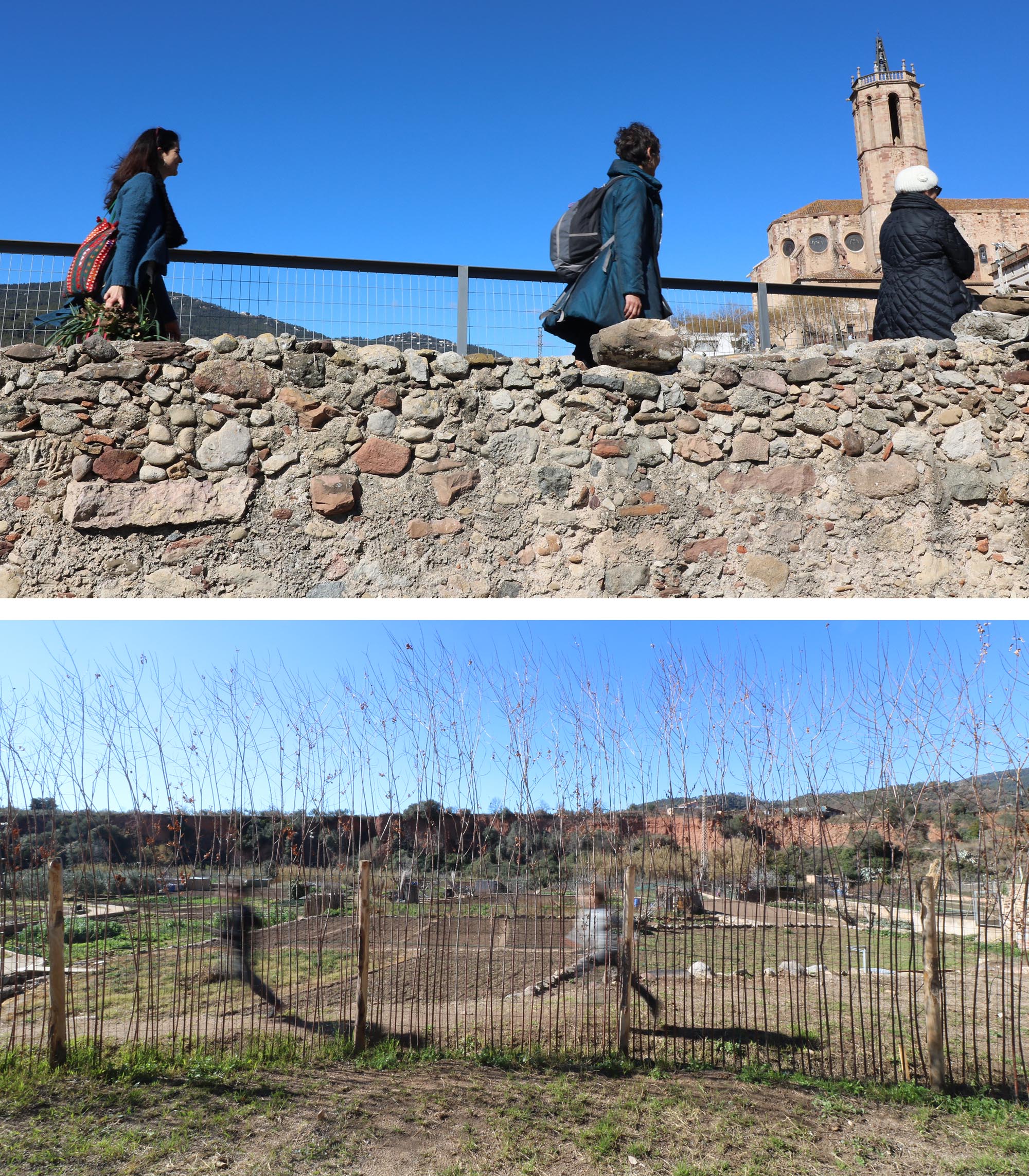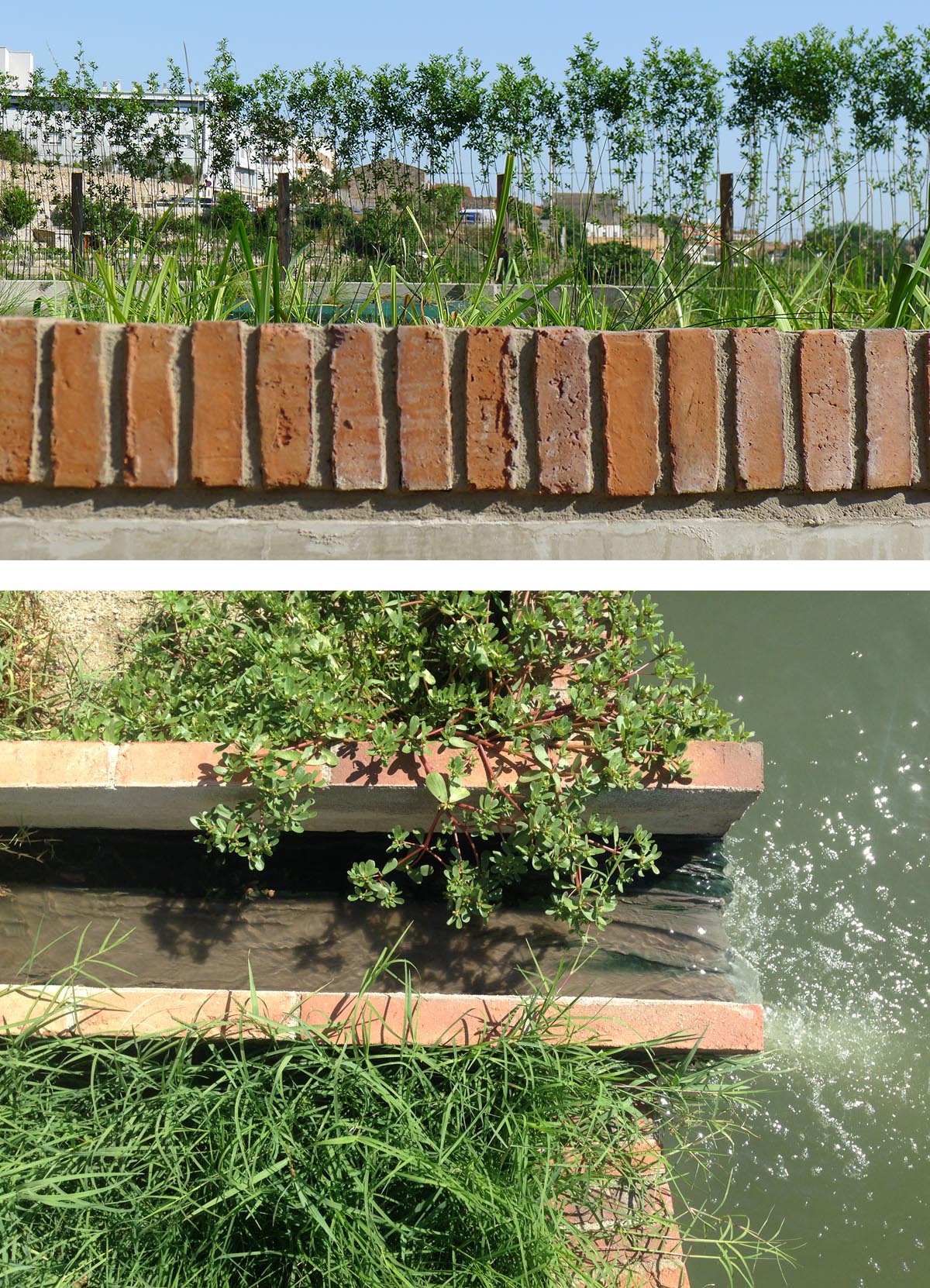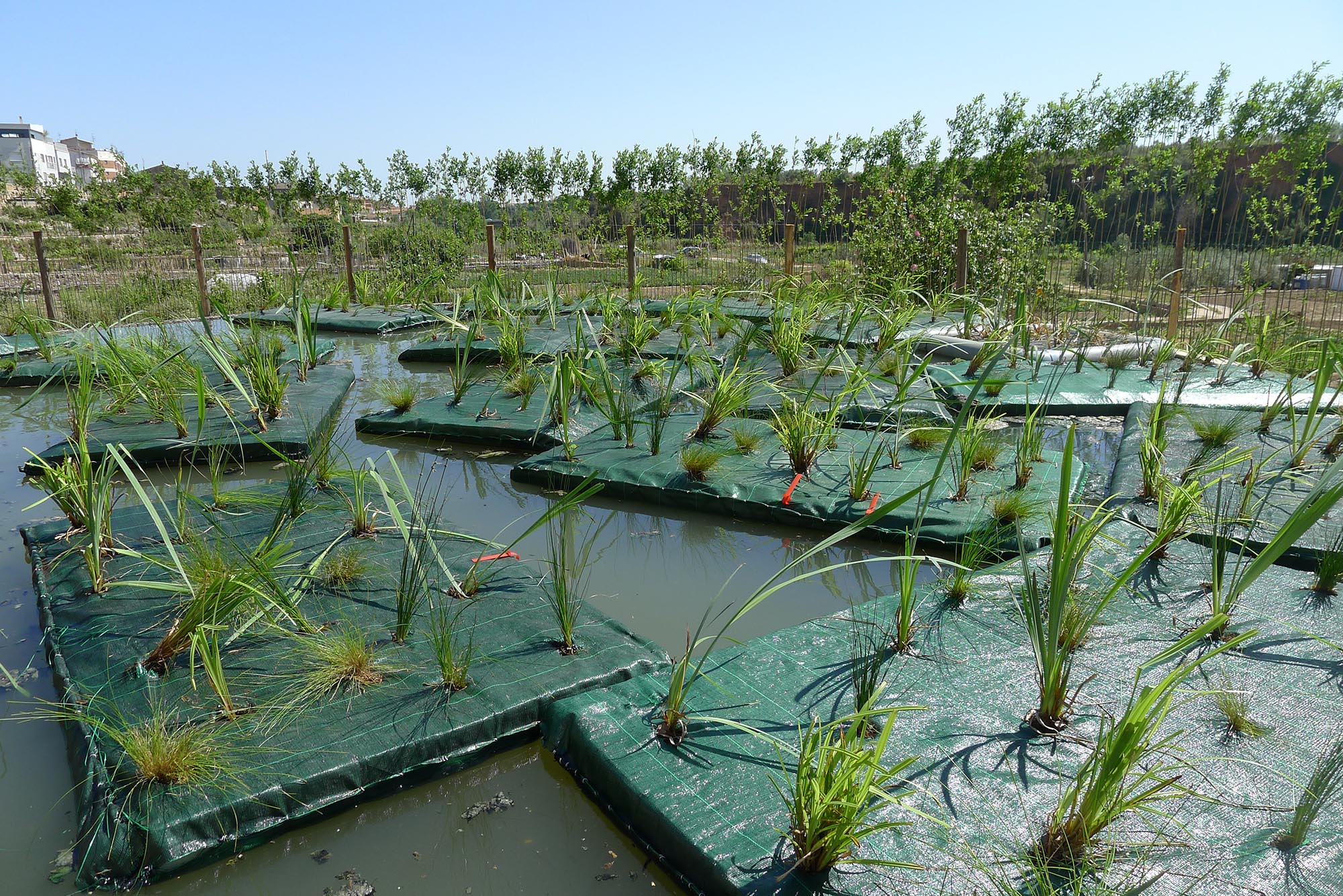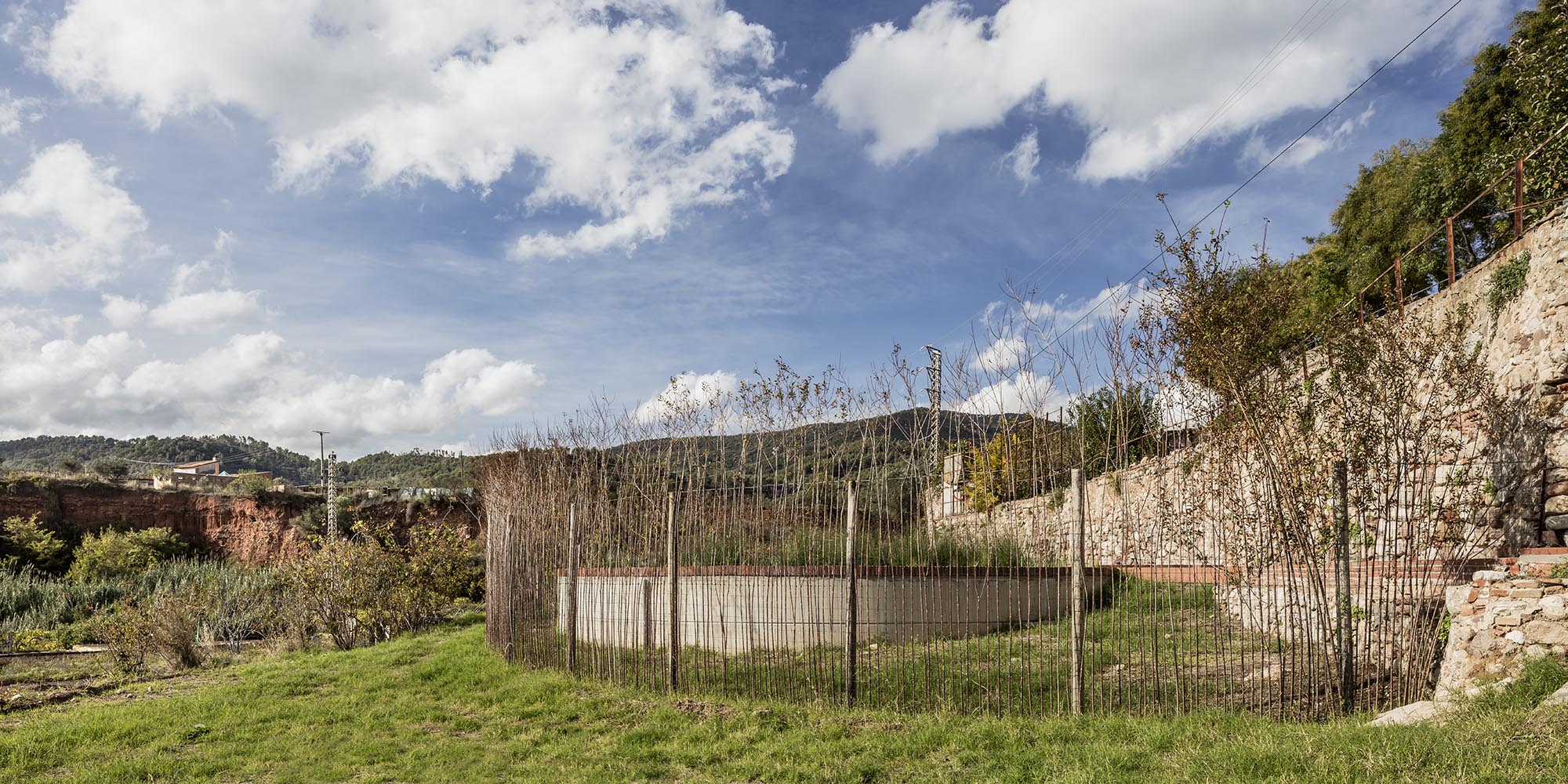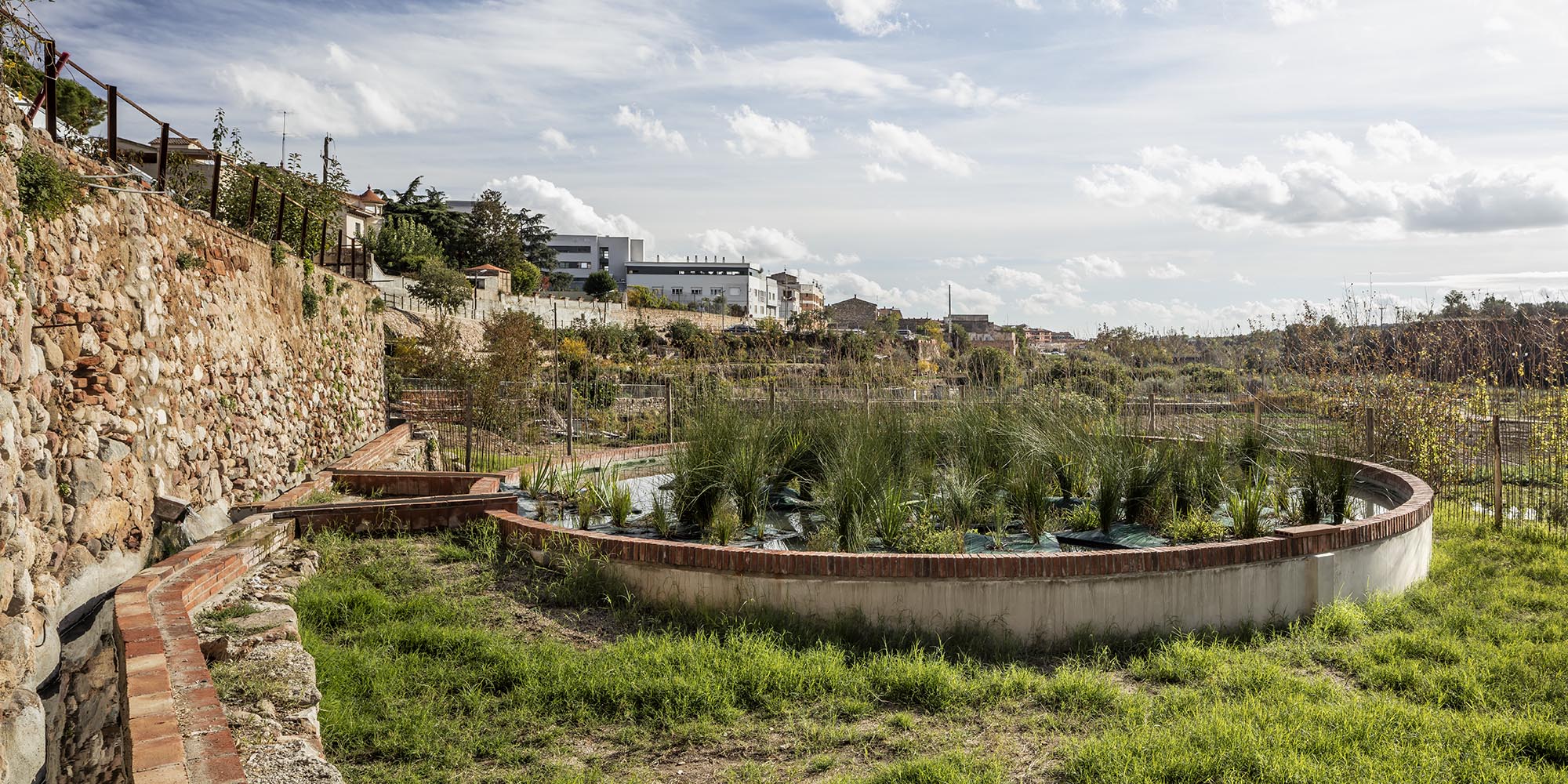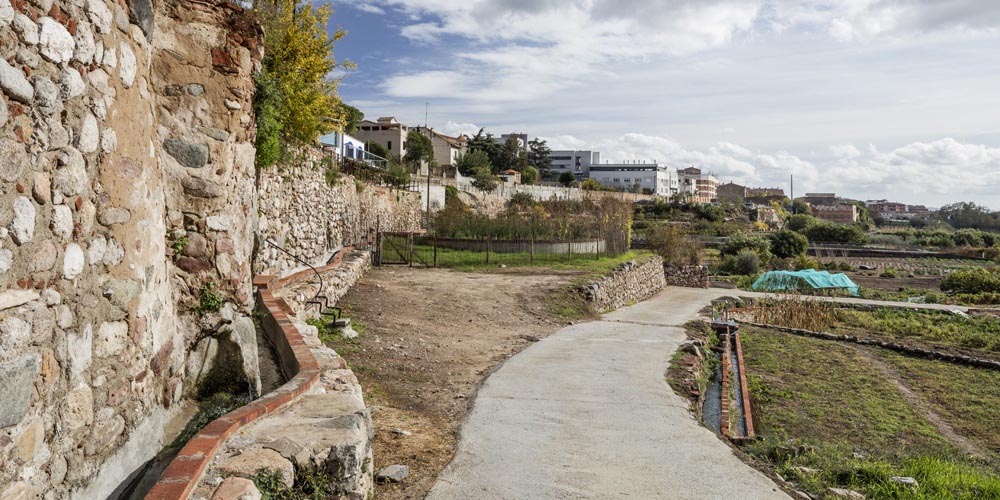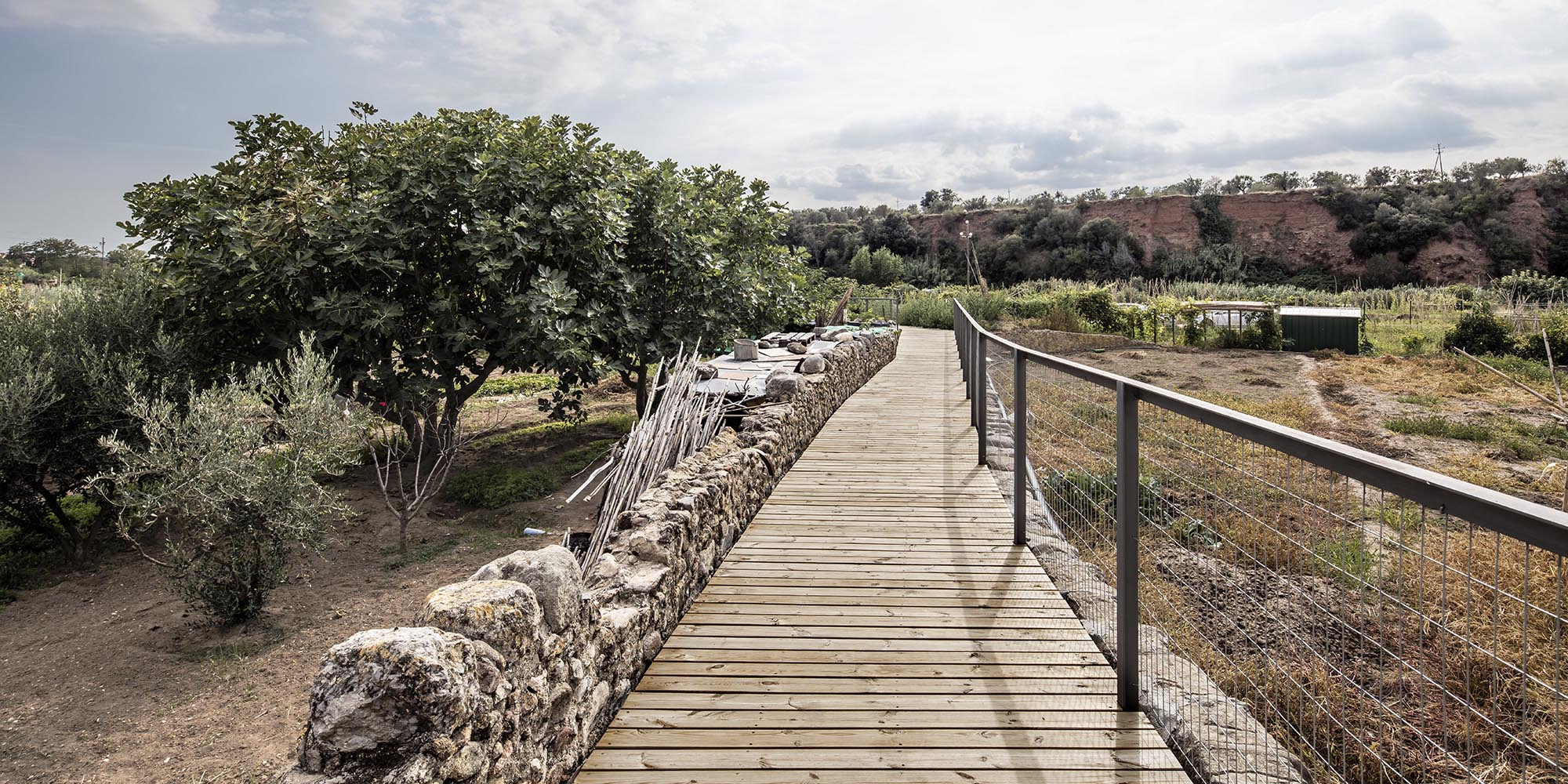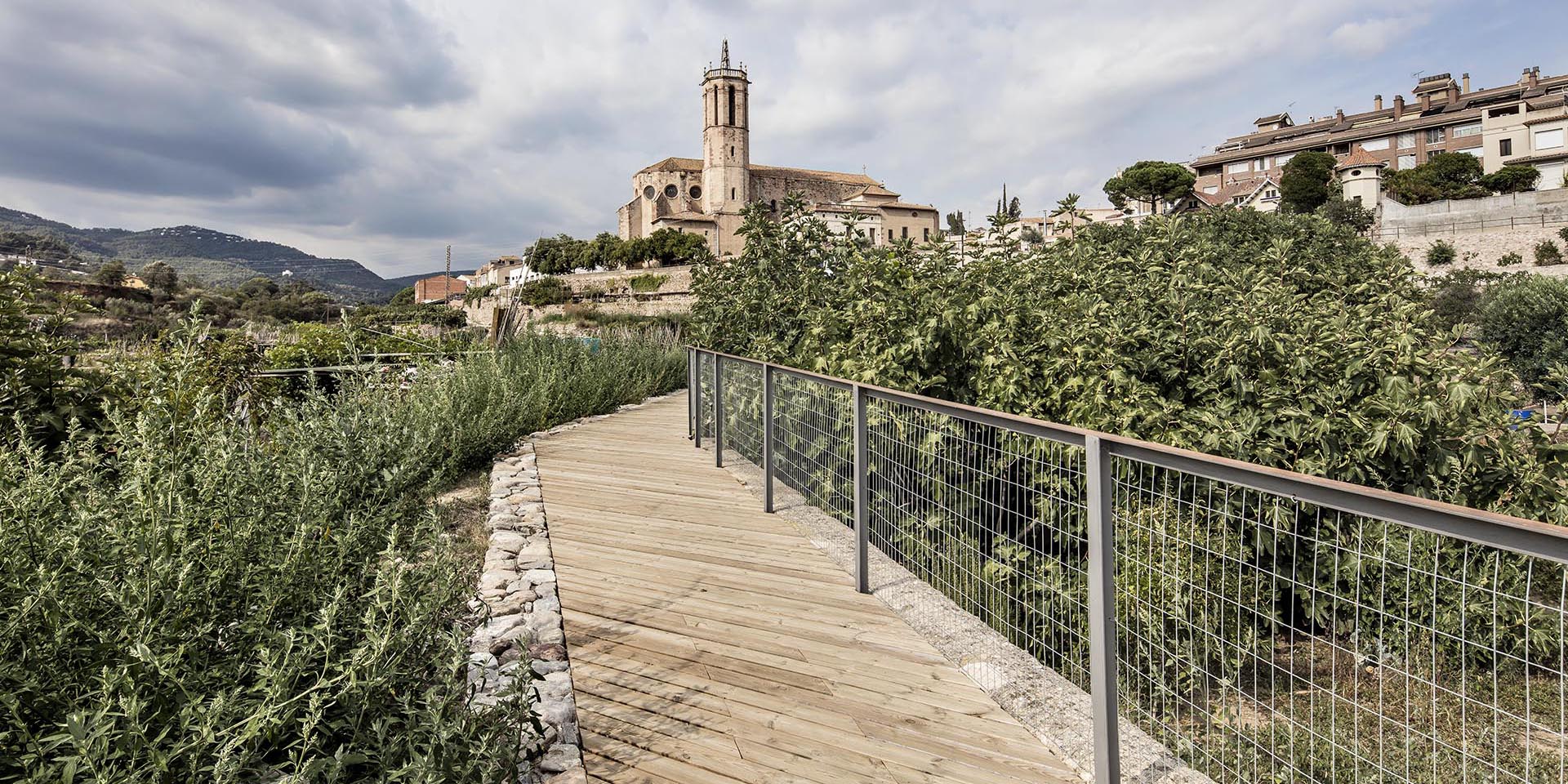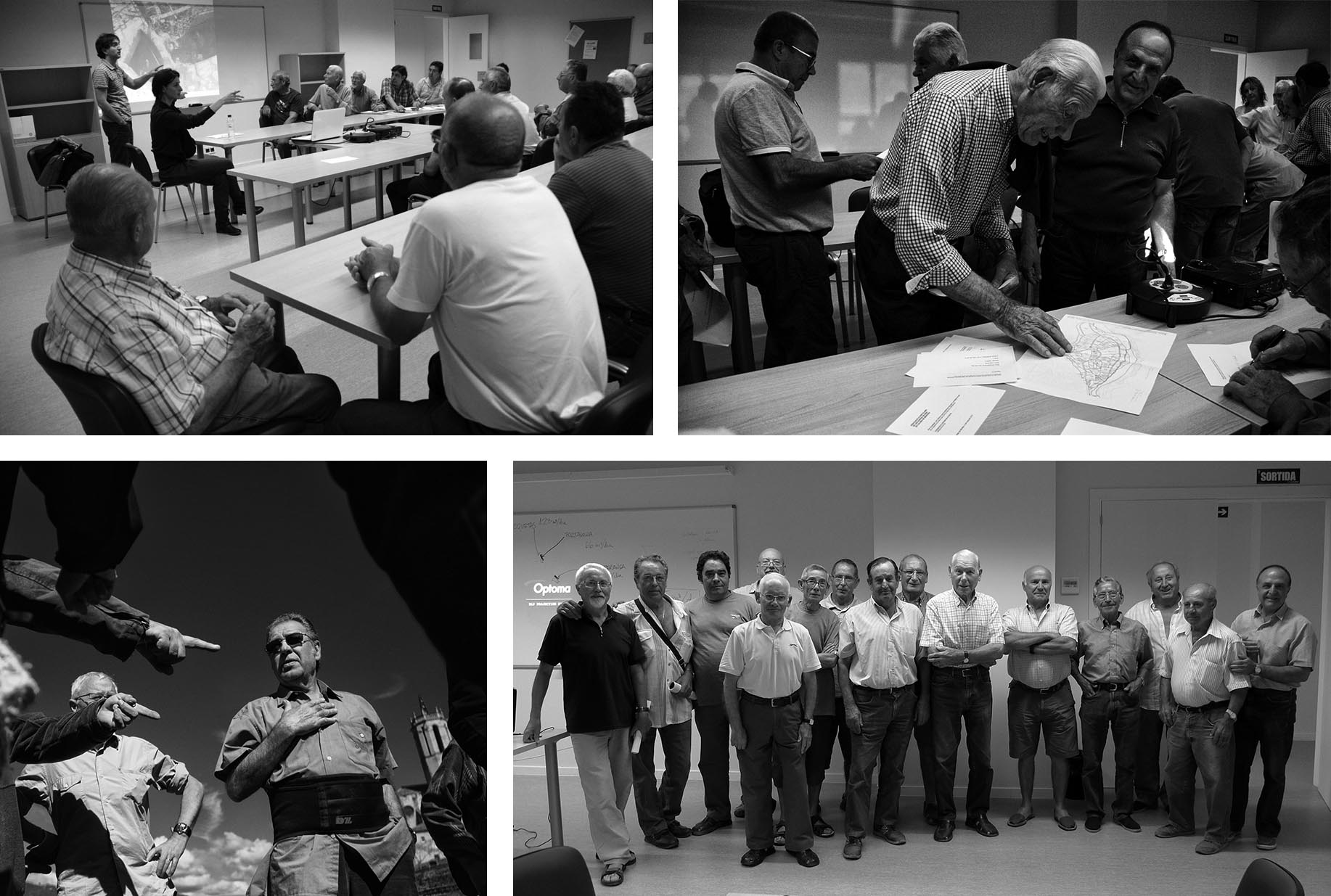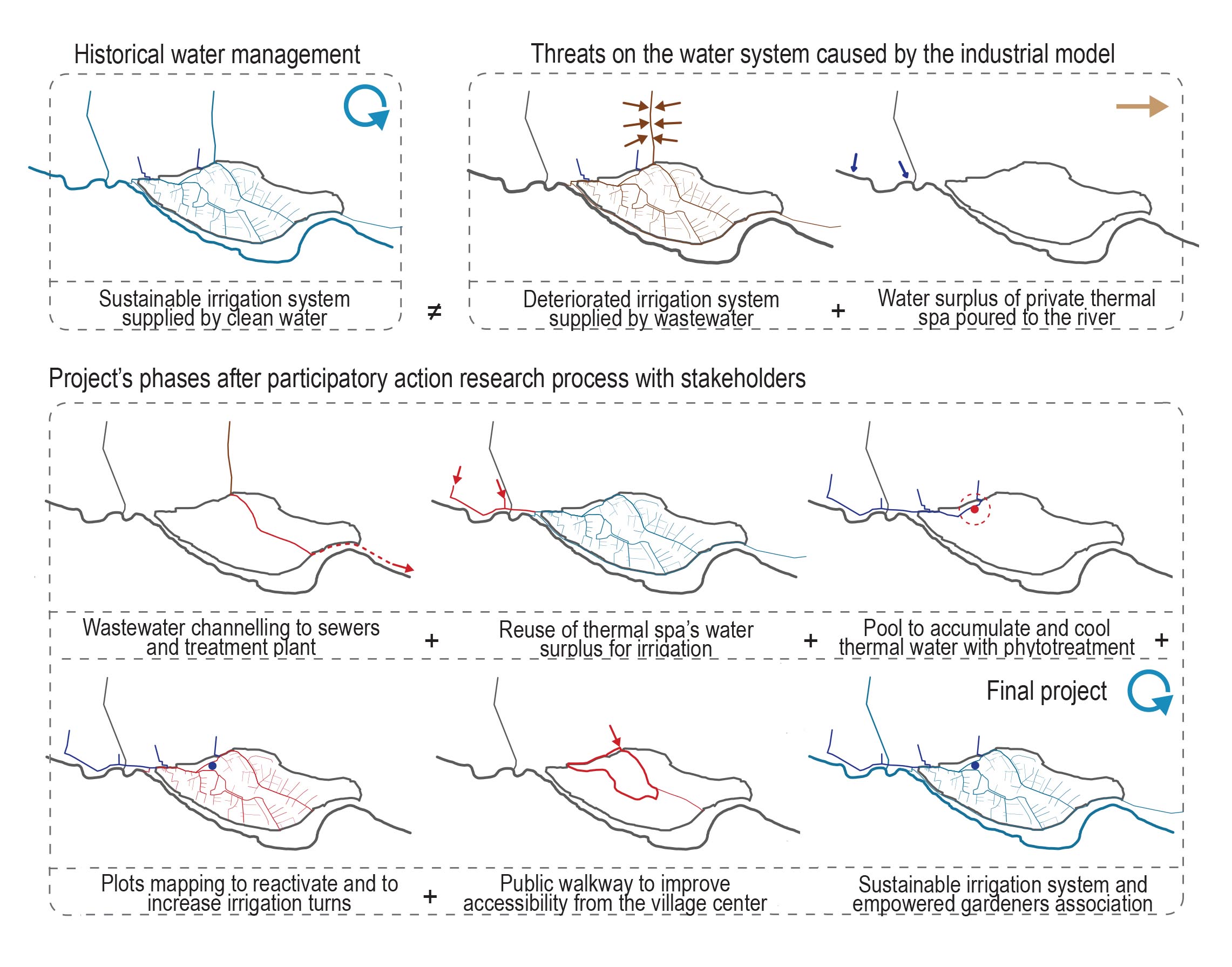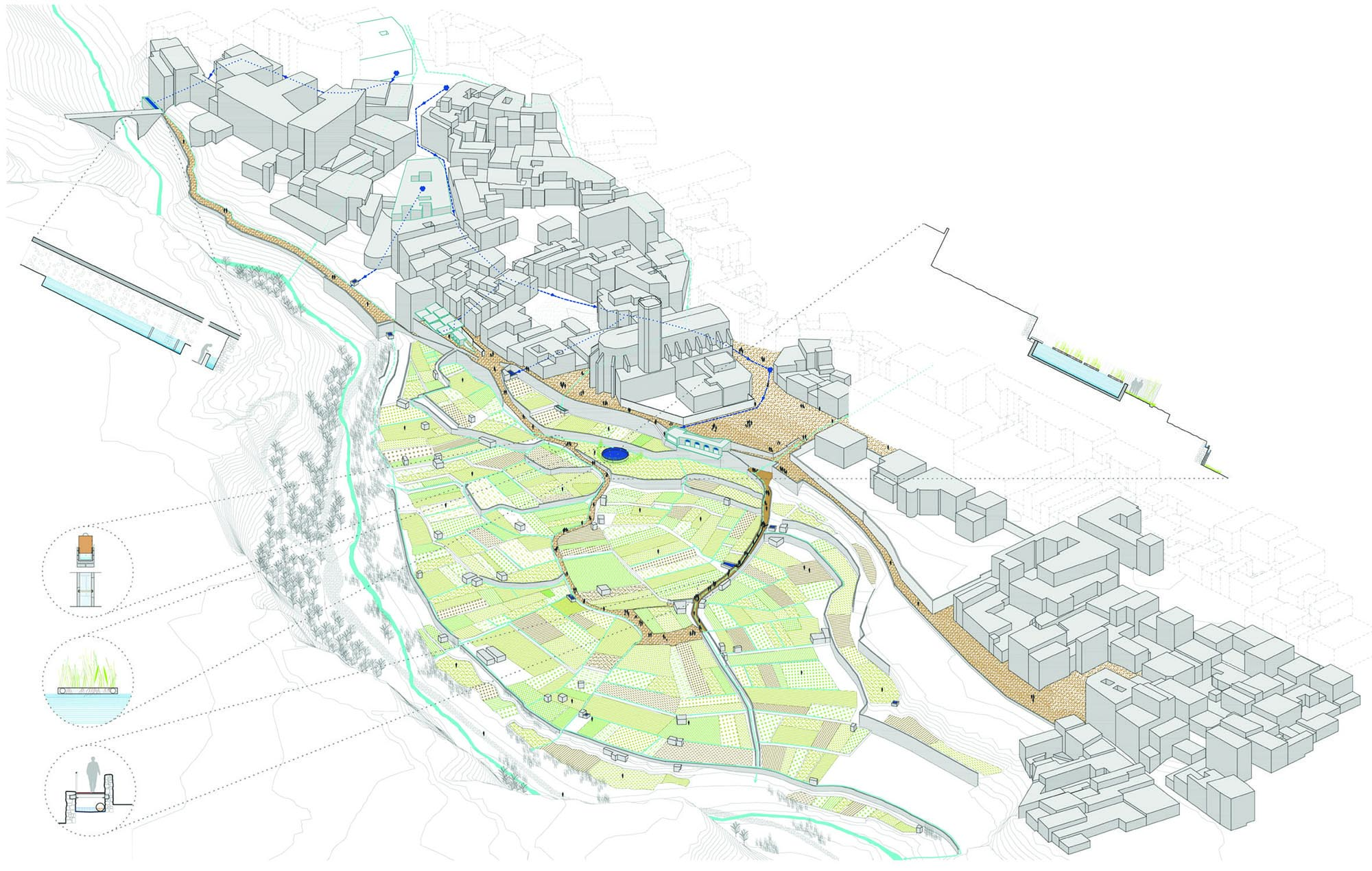Previous state
The place name Caldes, which probably originated in the Latin Aquae Calidae (hot waters), is loaded with a sense of antiquity and respect for water. This medium-sized town, located just over twenty-five kilometres from Barcelona, grew around some Roman thermal springs which are among the best-conserved in the Iberian Peninsula. For centuries, its mineral water, which flows from underground at a temperature of 74º C—one of the highest temperatures of all of Europe’s hot springs—has attracted outsiders seeking cures and rest. This explains the large number of centuries-old spas in the town and, accordingly, its consolidation as a tourist attraction and summering place.
The waters of Caldes were used not only for medicinal and recreational purposes. From ancient times, the leftover water from the hot springs was piped off for public laundries and, after that, as irrigation water for the Hortes de Baix (Lower Orchards) when the stream was dry. This heritage space, almost four hectares of irrigated land, occupies three tiered terraces at the bottom part of the parish of Santa Maria on the western side of the old town centre. However, one of the mainstays of the irrigation system, a channel with three-metre stone walls, was badly affected by the construction boom at the end of the twentieth century. The Caldes stream was covered over, after which a good part of the town’s sewage was tipped into it, whereupon it flowed down to the main irrigation channel where the bad smell testified to this health risk to the orchards which, neglected and now difficult to reach, were soon to become the last ones left in the town. Dispirited, ageing and with no prospects of a new generation to take over, the agriculturalists put down their tools and the community of people who had once worked the irrigated land fell apart.
Aim of the intervention
The social and environmental decline of the Hortes de Baix dragged on until 2012 when the Municipal Public Space Committee responded to demands for clean water, reactivation of local horticulture, and better connection between the old town and the agrarian heritage of its surrounding lands. The first requirement coincided with the imminent appearance of a European regulation requiring municipalities to ensure that any water being tipped into waterways should be of the same quality as the water originally extracted. It was understood that, once rescued from oblivion and neglect, the old orchards could constitute, besides productive territory, an educational public space which would also offer contact with nature.
Description
Over a period of two and a half years, some seventy market gardeners took part in a participative process which, from the very beginning, had the effect of uniting and empowering the community of orchardists. Helped by architects, they began to map out their blocks of land and to diagnose the state of the irrigation system. They quickly saw the need to channel off the sewage flowing in from the river in order to put an end to the contamination in the main irrigation canal. Since it was no longer possible to count on rainwater, they had the idea of using waste water from the spas which, though it was suitable for irrigation, had previously been wasted when mixed with sewage.
When the water was clean it still needed to be cooled and its course organised to meet the different peaks of demand of the irrigation system. Hence, a community pond was constructed on the upper terrace with a view to its being shared equally among all the blocks of land with two shifts of irrigation every week. A series of floating pots containing aquatic plants which assimilate organic material constitutes an innovative system of natural water purification, thus guaranteeing the quality of the stagnant water in the pond.
The network of smaller canals watering the blocks of land was repaired. These still operate on the principle of gravity and are fitted with manually operated floodgates without any need for mechanised systems. Based on recycling and constructed by the local people, all the renovation endeavours respect both the material heritage of the orchard and the intangible heritage of managing it, which is the responsibility of the community of orchardists. The spigots of the distribution tanks, the thick ceramic tiles set side by side to form the upper borders of the channels, and the woven wire fencing separating the blocks of land once more give an impression of unpretentiousness that is very much in keeping with a true market garden landscape. In order to make the orchard zone accessible so that everyone can enjoy it, a footbridge has been installed over the main channel, respecting the original stone walls. Besides giving easier access to the orchards it offers views of them from above and connects the church square with the outskirts of the town.
Assessment
Although it is fruit of simple, subtle operations, the recovery of the Hortes de Baix has benefitted Caldes de Montbui by means of a complex superimposition of different dimensions. At the urban level, it converted a tangle of disjointed properties, which were hidden and tucked away behind the town, into a major public space which makes contact with nature available to everyone. At the productive level, the intervention has breathed new life into barren land and, thanks to a municipal plan for its use, has rescued from unemployment and frustration people who have been strengthened by the values of working together and self-management of the project.
In an increasingly globalised world, conserving this kind of agricultural activity encourages exploration of the possibilities of food sovereignty based on sustainable production and responsible consumption of local, seasonal foodstuffs. At the cultural level, the intervention not only makes it possible to recognise the heritage value of the horticultural landscape. It also contributes by testifying to the intangible wealth of almost lost traditions from which some very useful lessons may be drawn for future generations, for example that of sensible use of water. It should never be forgotten that water is life.
David Bravo │ Translation by Julie Wark
Recovery of the Irrigation System. Caldes de Montbui (Spain). JOINT WINNER. European Prize for Urban Public Space 2016 (English) from CCCB on Vimeo.
[Last update: 27/07/2022]


